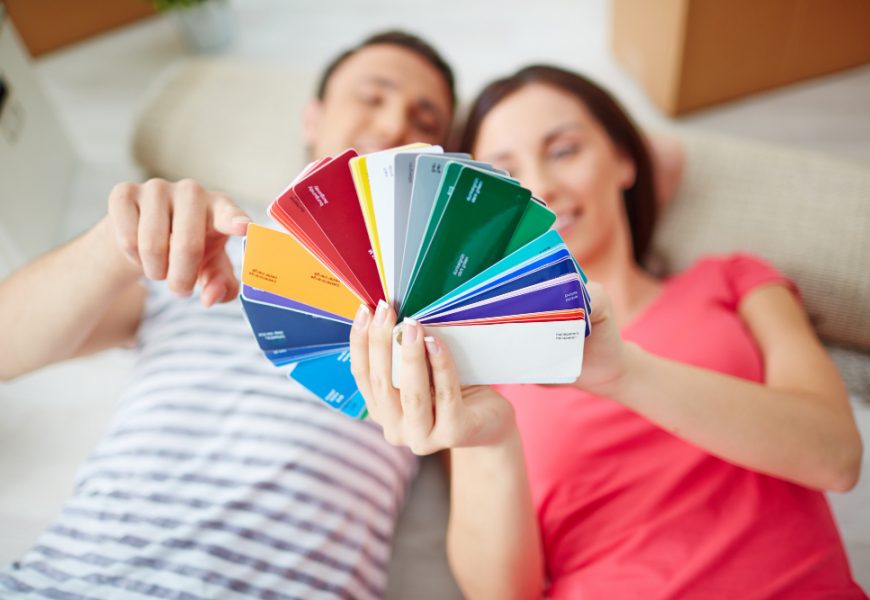Color is more than just a visual element of our surroundings; it is a deeply ingrained psychological force that subtly guides human emotion, behavior, and performance. While we often think of colors as aesthetic preferences or branding tools, neuroscience and psychology suggest that the hues around us interact with both our conscious and subconscious processes, altering stress levels, attention spans, and even the way we perceive safety or comfort. This makes color not just a matter of taste but a critical component of our psychological landscape, shaping our experiences at work, at home, and in public life.
Understanding the Subconscious Power of Color
The human brain is hardwired to respond to color. When light enters the eye, it is converted into electrical signals that travel to the brain’s visual cortex, but color perception doesn’t stop there. These signals also interact with other neurological pathways—including those linked to the hypothalamus, which influences hormones like cortisol and melatonin. This connection explains why certain colors can trigger relaxation, alertness, or stress on a purely physiological level.
For example, blue tones are consistently associated with calmness and stability. Neurological imaging has shown that viewing cool hues activates regions linked with relaxation, often lowering blood pressure and heart rate. Warm colors such as red or orange, by contrast, increase arousal levels by stimulating the sympathetic nervous system, leading to heightened alertness but sometimes fueling anxiety if used excessively. Greens often evoke balance, likely because of their longstanding cultural and evolutionary ties to nature, safety, and restoration.
Throughout history, artists, designers, religious leaders, and even monarchs have leveraged these associations. Ancient Egyptians decorated healing temples with blues and greens they believed restored the spirit. Medieval rulers reserved purple for royalty, not only because of the cost of dye but also because of its psychological link to power and mystery. Modern advertisers use similar strategies: fast-food chains employ reds and yellows to stimulate appetite and urgency, while wellness brands lean on soft greens and blues to suggest trust and tranquility.
What is remarkable is how even subtle changes matter. A shift from a saturated crimson to a muted terracotta may completely alter the perceived energy of a space—from intimidating to welcoming. Interior designers and digital interface creators increasingly acknowledge that color choices can regulate how long a person engages with an environment, how safe they feel, and how productive they become. This reinforces the view that color is not a superficial design feature; it is a foundation for emotional regulation, stress management, and cognitive engagement.
Advances in neuroscience continue to validate these patterns. Studies using fMRI scanning reveal consistent brain activation differences when people are exposed to various hues. Meanwhile, cross-cultural research broadens the discussion by showing that while some responses are universal—blue’s calming effect appears nearly everywhere—others are culturally conditioned. White, for instance, is symbolic of purity in many Western societies but often connected with mourning and death in parts of East Asia. In this sense, color psychology is both biological and cultural, underlining its layered complexity.
Color and Productivity: More Than an Aesthetic Choice
In professional and educational environments, color becomes more than a matter of mood—it directly influences productivity, focus, and overall well-being. Research has found that bright, saturated colors like yellow or orange can spark mental energy, stimulate brainstorming, and encourage perseverance, particularly in group settings where enthusiasm and creativity are needed. Conversely, softer, cooler hues such as light blue or green reduce cortisol (the stress hormone), enabling sustained concentration and deeper focus, making them effective for offices, classrooms, and study environments.
However, the relationship between color and productivity is not purely mechanical. Individual personality differences and cultural backgrounds shape how people respond to certain palettes. For instance, an extroverted employee might thrive in a vibrant, stimulating yellow-accented workspace, whereas an introvert might find the same environment overwhelming, leading to distraction rather than motivation. Similarly, in one culture, red may symbolize good fortune and ambition, while in another it could trigger stress or warnings of danger.
This presents a challenge to the notion of a universal “best” color strategy for work or learning environments. Instead, evidence points toward context-specific, adaptive approaches to color design. Some organizations experiment with flexible lighting systems that adjust warmth and brightness throughout the day, mimicking circadian rhythms. Others incorporate customizable workstations where employees can control background lighting or screen filters to suit personal preferences. In schools, classrooms painted with muted, neutral colors often encourage focus, while strategic splashes of bright tones in creative areas help stimulate imagination and collaboration.
Remote workers and digital designers also benefit from these insights. Since a large proportion of modern work occurs on screens, digital interfaces are essentially “environments” of their own. Color choices in user interfaces can determine whether a platform feels calming or overstimulating. Dark mode, for example, not only reduces eye strain but may also subtly alter mood and mental endurance during prolonged computer use. Applications designed for productivity increasingly factor in color psychology to keep users engaged without overwhelming them.
The Bigger Picture: Color as Environmental Psychology
What emerges from these findings is the realization that productivity is not solely about time management, tools, or technology. It is deeply tied to environmental psychology, with color playing a starring role. A thoughtfully designed color palette in an office can reduce stress, foster collaboration, and enhance problem-solving. In a classroom, it can improve knowledge retention and motivation. In public spaces—such as hospitals, libraries, or airports—it can determine whether people feel safe, calm, or anxious.
This has profound implications for organizations and communities. Leaders who dismiss color as superficial overlook a cost-effective yet scientifically supported way to improve well-being and efficiency. Conversely, those who recognize its psychological weight can create environments that not only look appealing but also function as supportive frameworks for human potential.
Ultimately, the psychology of color reminds us that our surroundings are not neutral backdrops. The shade of a wall, the tone of a digital screen, or the palette of a public space can recalibrate stress levels, influence creativity, and even shift interpersonal dynamics. As neuroscience and cross-cultural research continue to deepen our understanding, it becomes increasingly clear that color is not simply a design choice—it is an essential tool for shaping how we feel, think, and perform.
Color is not just decoration; it is communication. It signals safety, amplifies energy, reduces stress, or nurtures focus—sometimes without our conscious awareness. In work, education, and daily life, leveraging the psychology of color means recognizing that well-being and productivity stem not just from what we do, but also from the environments in which we do it. Just as sound, light, and air quality shape human experience, so too does color—quietly, consistently, and powerfully.
In a world where we juggle constant demands for performance and balance, understanding the psychological impact of color is not merely an artistic concern but a scientific and practical one—one that offers both individuals and communities a pathway to healthier, more productive living.









